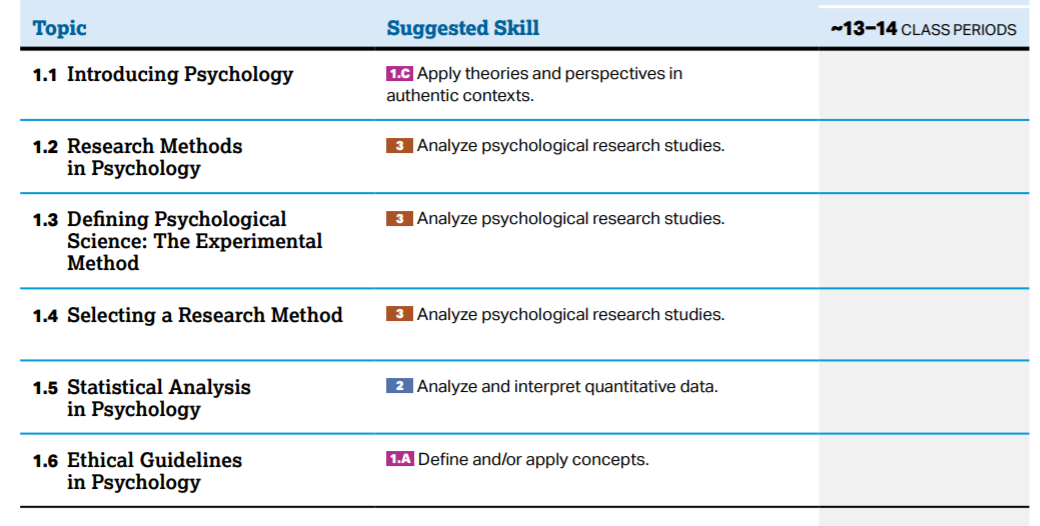|
Activities Requests from outside of my district will be denied.
PresentationsHelpful LinksVideos |
Unit 1: Scientific Foundations of Psychology
AP Exam Weighting: 10-14% Psychology is the scientific study of behavior and mental processes. This course examines the history of psychology and psychological theories, contemporary perspectives on psychology, and how psychological research is conducted. As scientists, psychologists collect data and make observations about the ways in which humans and animals behave and think in order to understand behavior and mental processes. Psychologists use a variety of research methods and designs to conduct their research. These tools help them develop psychological theories about behavior and mental processes. To ensure that their results are valid and reliable, psychologists’ research must adhere to strict ethical and procedural guidelines. Historical research is the foundation of the field of psychology and has become the basis for the many subfields within psychology that exist today. Many theories, schools of thought, and perspectives exist in the field of psychology. This course surveys and applies those ideas, training students to identify the major theories and perspectives. Within the major fields of psychology, appropriate research methodology is crucial to produce reliable and valid results and avoid bias. In this unit, students are introduced to research methods and designs that will help them learn how to avoid ethical misconduct and design flaws. Students will learn to differentiate between research designs, identify the advantages and disadvantages of each, and determine why one research method should be used over another. Students will also learn which research methods and modes of questioning are appropriate for different fields of psychology as well as how to use appropriate descriptive statistics when presenting their data. Unit 1 provides foundational knowledge about the field of psychology and introduces students to the research methods associated with various theories, schools of thought, and perspectives. From the start, students can begin to answer research method questions. Students often struggle with knowing which types of research questions can be studied with which methods. Students also struggle with graphic representations of data, in part because they often confuse the independent with the dependent variable. Teachers can give students opportunities to practice constructing graphs, emphasizing the correct placement of the variables on the axes. Students also struggle with using statistics, particularly statistical significance—they might describe correlational research rather than statistical significance or use the term “confidence interval” without connecting it back to the data. Without further explanation, exam graders cannot confirm a student’s understanding of statistical significance. |
